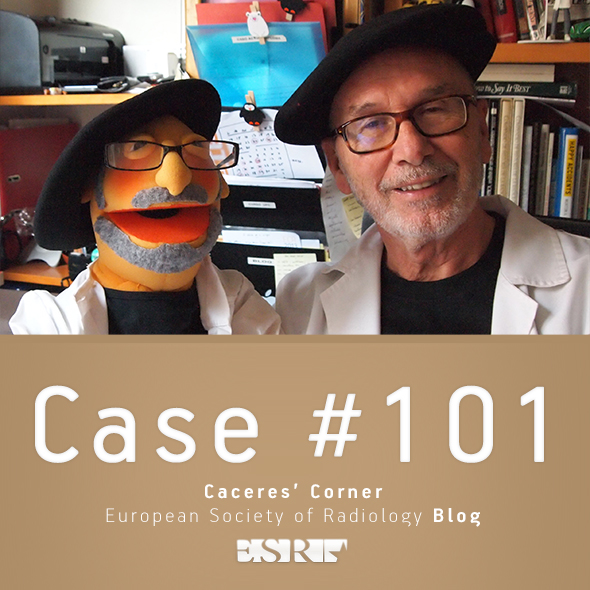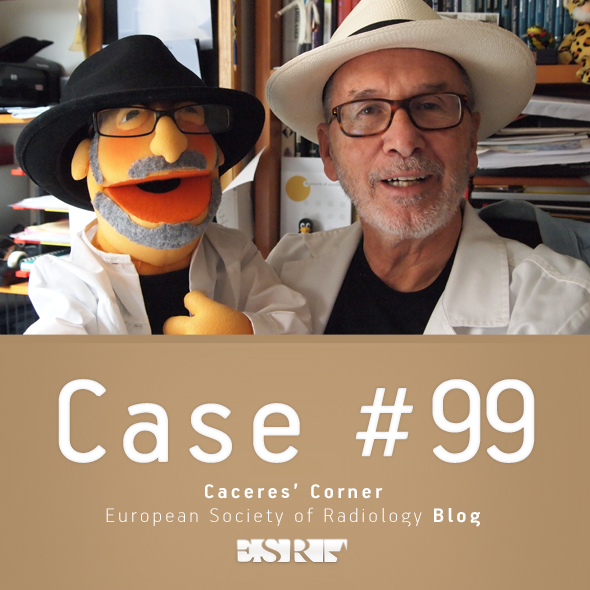
E³ 1520 – Thoracic emergencies, A-458 B – Pulmonary
A short preview of lecture A-458 ‘B. Pulmonary’, from the session E³ 1520 ‘Thoracic emergencies’ at ECR 2014, given by C.M. Schaefer-Prokop from Amersfoort, Netherlands. Watch the whole lecture and many more at http://ipp.myESR.org Direct link: http://bit.ly/Thoracic_emergencies
Sunday, March 9, 16:00 – 17:30 / Room A
Abstract: Acute respiratory failure can have multiple underlying causes including infection, fluid overload, immunological diseases or exacerbation of preexisting lung disease. Since the clinical symptoms are nonspecific, imaging plays an important role. The first imaging method is mostly the chest radiograph, easy to access and to obtain, but non-diagnostic in many cases. (HR)CT offers more possibilities to define the differential diagnosis. The option of this interactive workshop will be to get familiar with the spectrum of diseases that can cause acute respiratory failure and learn about key findings in radiography as well as CT to reduce the differential diagnosis. The interaction between preexisting lung disease, clinical information (e.g. chemotherapy, rheumatoid arthritis, COPD) and imaging findings will be discussed using clinical case studies. Options and also limitations of imaging findings will be illustrated. The following scenarios will be taken into account: acute cardiac failure and various appearances of oedema; acute immunological-toxic disorders including drug-induced lung disease and inhalational injuries; exacerbations of preexisting lung disease including fibrotic and obstructive lung disorders; severe infections causing respiratory failure and their complications.

Dear Friends,
Muppet is feeling very guilty about the difficulty of case 100. To regain your sympathy, he has selected an easy case: radiographs belong to a 53-year-old woman with moderate pain in the right hemithorax for the last six months. Where is the lesion?
1. Lung
2. Mediastinum
3. Pleura/chest wall
4. Can’t tell
Check the images below, leave your thoughts in the comments sectiona and come back on Friday for the answer.
Read more…

Dear Friends,
Today I am presenting the case of a 43-year-old man with lymphoma, admitted with fever and left pleural effusion. Radiographs were taken after pleural fluid drainage. Check the images below, leave me your diagnosis in the comments section and come back on Friday for the answer.
Diagnosis:
1. Pneumonia
2. LLL collapse
3. Pleural fluid
4. None of the above
Read more…

Dear Friends,
Muppet and I are very happy to have reached one hundred cases. We hope you enjoyed them as much as we did. Radiographs of this case belong to a 52-year-old man with vague chest complaints. He was operated on for testicular tumour fifteen years earlier.
Check the images below, leave your thoughts and diagnosis in the comments section, and come back on Friday to find out the answer.
Diagnosis:
1. Duplication cyst
2. Lymphangioma
3. Metastasis from testicular tumour
4. None of the above
Read more…

MC 622 – Chest emergencies, A-136 A. Thoracic injuries (S.E. Mirvis)
A short preview of lecture A-136 ‘A. Thoracic injuries’, from the session MC 622 ‘Chest emergencies’ at ECR 2014, given by S.E. Mirvis from Baltimore, United States.
Watch the whole lecture and many more at http://ipp.myESR.org
Direct link: http://bit.ly/Chest_emergencies
Friday, March 7, 14:00 – 14:30 / Room F1
Abstract:
Chest trauma is directly responsible for 25 % of all trauma deaths and is a major contributor in another 50 % of all trauma mortality. Blunt trauma, accounting for 90 % of chest injuries, is the third most common site of injury in polytrauma patients. Plain radiographs still have a role in recognition of some acute thoracic pathology that requires immediate further management, either diagnostically and/or therapeutically, such as tension pneumothorax, major transdiaphragmatic herniation, large hemothorax or obvious mediastinal hematoma. MDCT of the chest is now typically included in a whole body scan with IV contrast to facilitate rapid diagnosis on polytrauma cases using less radiation than selected segmental scans. MDCT is the well-proven diagnostic gold standard for chest injury evaluation. The major advantages of MDCT over other modalities include identification of active bleeding, direct signs of trachea or esophageal injury, direct evidence of major arterial vascular injury, such as pseudoanurysms, pneumo and hemopericardium, location and extent of lung contusion and laceration, and assessment for thoracic spine, shoulder girdle and rib fractures. Diaphragm injuries are well depicted by MDCT, especially on the left by identifying both the torn diaphragm edges, herniation and constriction of abdominal contents at the level of the torn diaphragm (collar sign), and direct contact of herniated structures with the posterior chest wall (dependent viscera). Tracheal injuries are suggested by diffuse and progressive pneumomediastinum, dilated tracheostomy cuff, ectopic endotracheal tube, and direct connection of mediastinal air with the trachea lumen. CT-angiography eliminates the majority of indications for diagnostic catheter angiography.

Dear Friends,
Today I am showing PA chest and sagittal CT of a 66-year-old woman with a persistent RLL infiltrate and negative bronchoscopy. Check the images below, leave me your thoughts in the comments section, and come back on Friday for the answer.
Diagnosis:
1. Tuberculosis
2. Chronic aspiration pneumonia
3. Carcinoma
4. None of the above
Read more…

Dear Friends,
Muppet is very excited because case 100 is only two weeks away. In the meantime, he wants to present a simple case that we saw one month ago. The radiographs below belong to a 53-year-old man with cough and fever. What do you see?
Leave your thoughts in the comments and come back on Friday for the answer.
Read more…

Dear Friends,
Today I am presenting pre-op chest films of a 48-year-old man with renal carcinoma. How will you define the lesion at the right cardiophrenic angle?
1. Benign nodule
2. Primary malignancy
3. Metastatic nodule
4. Can’t tell
Check the images below, leave your answer in the comments and come back on Friday for the answer.
Read more…

Dear Friends,
With your welfare in mind, Muppet has selected this week’s case. Radiographs belong to a 76-year-old woman, admitted to the hospital with moderate fever and vomiting.
Diagnosis:
1. Aspiration pneumonia
2. Tracheomegaly and pneumonia
3. Pneumonia and pericarditis
4. None of the above
Read more…

Dear Friends,
Today I am showing chest radiographs of a 78-year-old woman with moderate dyspnoea. Check the images below, leave your thoughts and diagnosis in the comments, and come back on Friday for the answer.
Diagnosis:
1. Mitral valve calcification
2. Pericardial calcification
3. Calcified ventricular aneurysm
4. None of the above
Read more…









